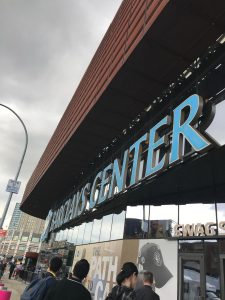Team Members: Zu Qiang Deng, Donna Chow & Anesha Hyles
PODCAST Question:
How did the Atlantic Yards project affect the community before and after?
Introduction
- Relevance
It is relevant because the Atlantic Barclays is a public facility. It affects many people around the area. Proposed projects in the future will eventually impact the neighborhood as a whole.
- History (society before the Atlantic Barclays project).
- NYC City Map
- A major intersection that can either take you to Jamaica, Queens, the Guanas and
- From the years 1924-1951, you can see the railroad tracks, including the track that came overhead
- There were residential buildings on each block
- From 2006-2010 you start to notice the removal of the railroad tracks, including the track that came overhead, and demolition of some of the buildings
- 2012 The Barclays Center is built, with the removal of some streets and more railroad tracks
What was proposed?
- Brooklyn Developer Reaches Deal to Buy New Jersey Nets
-
- Mr. Ratner’s project to be built – there needs 21 acres of land
- In the 21 acres, four towers will be occupied by offices and 4,500 apartments, design by the architect Frank Gehry.
- Patti Hagan, Prospect Park Heights Coalition leader, states project requires demolition of homes of 864 people and lost 237 jobs.
-
- Brooklyn Developer Reaches Deal to Buy New Jersey Nets
- The Metropolitan Transportation Authority (MTA) have to move 11 tracks that criss-cross the Long Island Rail Road’s, it is three-block long Vanderbilt yard
- 2/20/2007: Demolition work begins
Community Reaction
- Atlantic Yards, Inch by Inch
- 3/28/2004: A new community-activist group, Develop Don’t Destroy Brooklyn, organizes a rally on Pacific Street.
- 7/16/2006: 2,000 protesters rally in Grand Army Plaza.
- 10/26/2006: “In federal court, activists allege that New York State is abusing its eminent-domain rights; it’s the first major lawsuit filed (as distinct from roughly ten minor legal skirmishes) against the project.”
How did the Barclays affect people after (Does the development projects satisfy the communities needs ?)
a)Transportation Before and after
- 6 ways to maximize home-field advantage in sports venue design
-
- Barclays Center can be reached by 11 subway lines, the Long Island Rail Road, and 11 bus lines.
-
- Barclays Center Traffic Plan: Scare the Drivers Away!
- Design of the Barclays Center forces people to get there by train from limited parking slots.
- When people arrive by train or LIRR, it would add more trains to accommodate fans.
B) Economic Growth
- Businesses before and after
- The Barclays effect
-
- Events, games and concerts nights businesses along Flatbush and 5th Avenue, and the smaller side streets are doing well with the Barclays
-
- The Barclays Center: An Economic Snapshot
-
- Bar and restaurants business revenue grew since the Barclays.
- Family owned business, furniture shop, had to relocate because of the Barclays.
- Clothing stores benefited from the Barclays name and the Brooklyn Nets team.
- The neighborhood shifted from family folk to chasing the nightlife.
-
- Daily News//Barclays Center scores: City says arena generated $14 million in tax revenues in its first year
-
- The Barclays Center has generated an estimated $14 million in tax revenues in its first year
- City officials told the Daily News, providing the first tally of the $1 billion arena’s contribution to the city’s coffers.
- These are dollars that would not be flowed into the local economy had the arena not been in operation, city officials said.
- The $14 million in tax revenues includes sales tax associated with purchases inside and outside the sports and entertainment complex, as well as income tax generated by Barclays Center employees and the Brooklyn Nets.
c) Jobs Before and after
- Barclays workers fail to break from union
-
- at Madison Square Garden, where full-time staffers get $46 an hour
- Compared to Part-time Barclays workers, salary starts from $14 an hours-> up to $20 max
- Madison Square Garden has fewer than 20 full-time conversion crew employees and that its 80 part-timers start at $11 an hour and top out at $18
- Still, Michael Odom, a member of the conversion crew who is helping lead the charge to leave 32BJ, said the contract the union negotiated, doesn’t allow him to make a living. – “I feel like they failed us. I can’t live on $14 an hour, and I only get work one or two days a month, but can’t collect unemployment,” he said.
- The Economic rise of Brooklyn, in charts
-
- Brooklyn is by far the fastest-growing in terms of where people make their money.
- From 2001 to 2015, the total wages of people working in Brooklyn rose by 40% from $16.5 billion to $23.2 billion, in 2015 dollars.
d) Displacement of Residents
- Based on the https://www.socialexplorer.com/ website,
- we find out that at the Census Tract 129.01 and 129.02 Kings Country, New York
Conclusion
- Existing perception:
-
- Atlantic Barclays impacted the neighborhood vastly, not including to topics from this podcast.
- there are positive perspectives about the Atlantic Barclays, and negative perspectives
- In the end, did Atlantic Barclays suit the well-being of the neighborhood?




Recent Comments